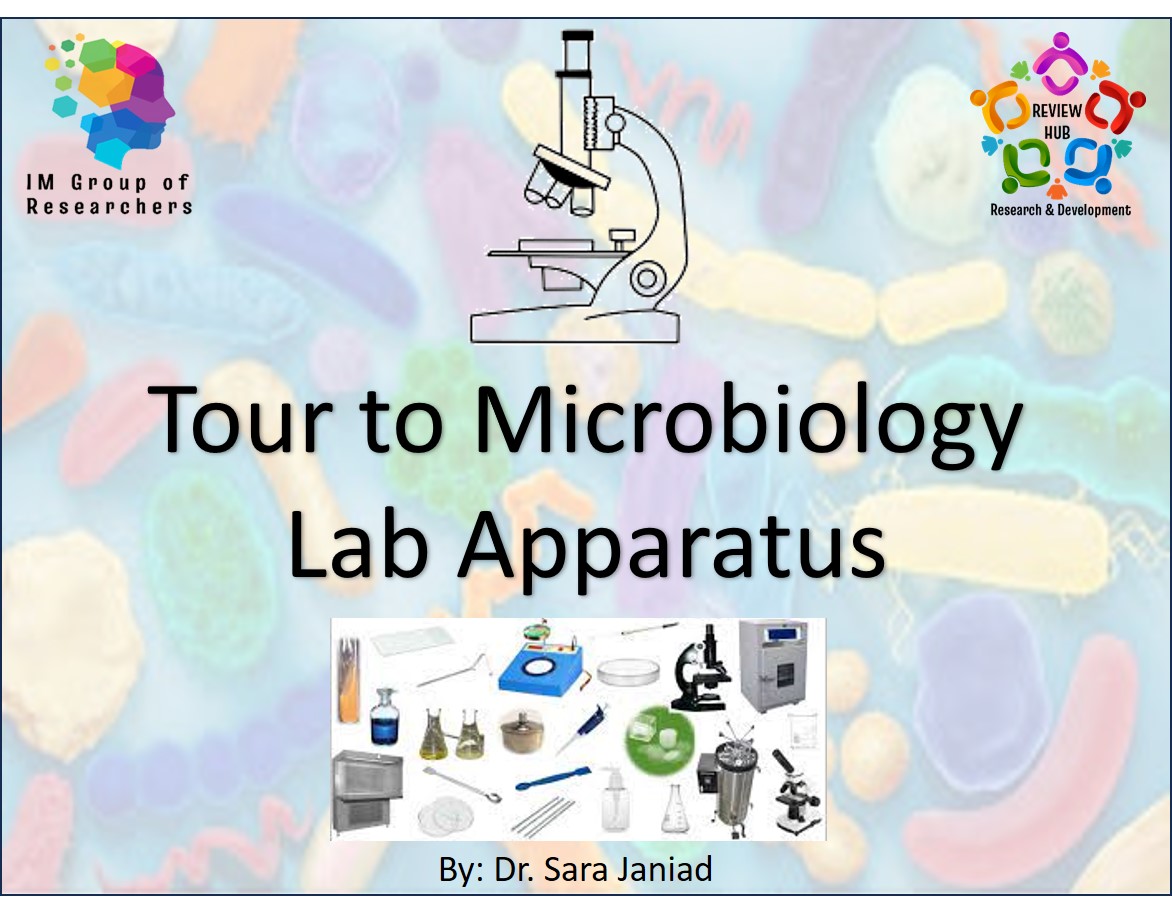Tour to Microbiology Lab Apparatus
A little tour to microbiology lab apparatus. A microbiology lab is a facility where scientists and researchers study microorganisms such as bacteria, viruses, fungi, and protozoa. Various apparatus and equipment are used in a microbiology lab to conduct experiments, analyze samples, and carry out research. Here’s a tour of some common apparatus you might find in a microbiology lab:
Author: Dr. Sara Janiad
Here are some common microbiology lab apparatuses and their uses:
Microscope
Magnification and observation of microorganisms such as bacteria, fungi, and protozoa.

Incubator
Providing controlled conditions (temperature, humidity) for the growth of microorganisms.

Autoclave
Sterilizing equipment, media, and glassware using steam under pressure.

Biosafety Cabinet
Providing a sterile and protected environment for working with infectious agents.

Petri Plate
Culturing and isolating microorganisms.

Inoculating Loop & Needle
Transferring microorganisms aseptically for culturing.

Bunsen Burner/ Spirit Lamp

Microcentrifuge
Centrifuging small volumes of liquid to separate components.

Vortex Mixer
Mixing and homogenizing liquids or suspensions.

Microbiological Media
Providing a nutrient-rich environment for the growth and study of microorganisms.

Staining Rack & Jars
Holding slides for staining bacterial cells.

Gram Staining Kit
Differentiating bacteria based on their cell wall composition.

Microbial Inoculation Chamber
Creating a controlled environment for inoculating cultures.

Anaerobic Jar
Creating an oxygen-free environment for cultivating anaerobic bacteria.

Colony Counter
Counting and analysing microbial colonies on agar plates.

Spectrophotometer
Measuring the optical density of microbial cultures to estimate cell concentration.

pH Meter
Measuring the acidity or alkalinity of culture media.

Microbial Identification Systems
Identifying and characterizing microorganisms based on biochemical and molecular tests.

Inverted Microscope
Examining microorganisms in cultures or tissues.

Fluorescent Microscope
Visualize and study biological specimens by exciting fluorescently labelled molecules.

Hemocytometer
Counting cells in a known volume to determine cell concentration.

PCR Machine
Amplifying and analyzing DNA for microbial identification.

Oven
Sterilization of glassware and to keep them dry.

Spreader
For even distribution of bacterial cultures onto agar plates, facilitating the isolation and enumeration of individual colonies.

Shakers for Submerged Fermentation Process
Orbital Shakers
Orbital shakers move in a circular motion, providing gentle agitation to the fermentation medium. They are commonly used in laboratories for small-scale experiments.

Reciprocating Shakers
Reciprocating shakers move back and forth in a linear motion. They are suitable for larger volumes of fermentation broth and are often used in industrial settings.

Magnetic Stirrers
Magnetic stirrers use a magnetic field to rotate a stir bar within the fermentation vessel. They are effective for small to medium-sized cultures.

Mechanical Agitators
In larger industrial fermenters, mechanical agitators or impellers may be used. These devices are designed to provide strong and efficient agitation for large-scale fermentation processes.

Air-lift Bioreactors
Air-lift bioreactors use air bubbles to circulate the fermentation medium. The rising air bubbles create a flow that helps mix and aerate the culture.

Also read: Bridging the Gap: The Academics Journey Beyond the Ivory Tower
Follow Us on

